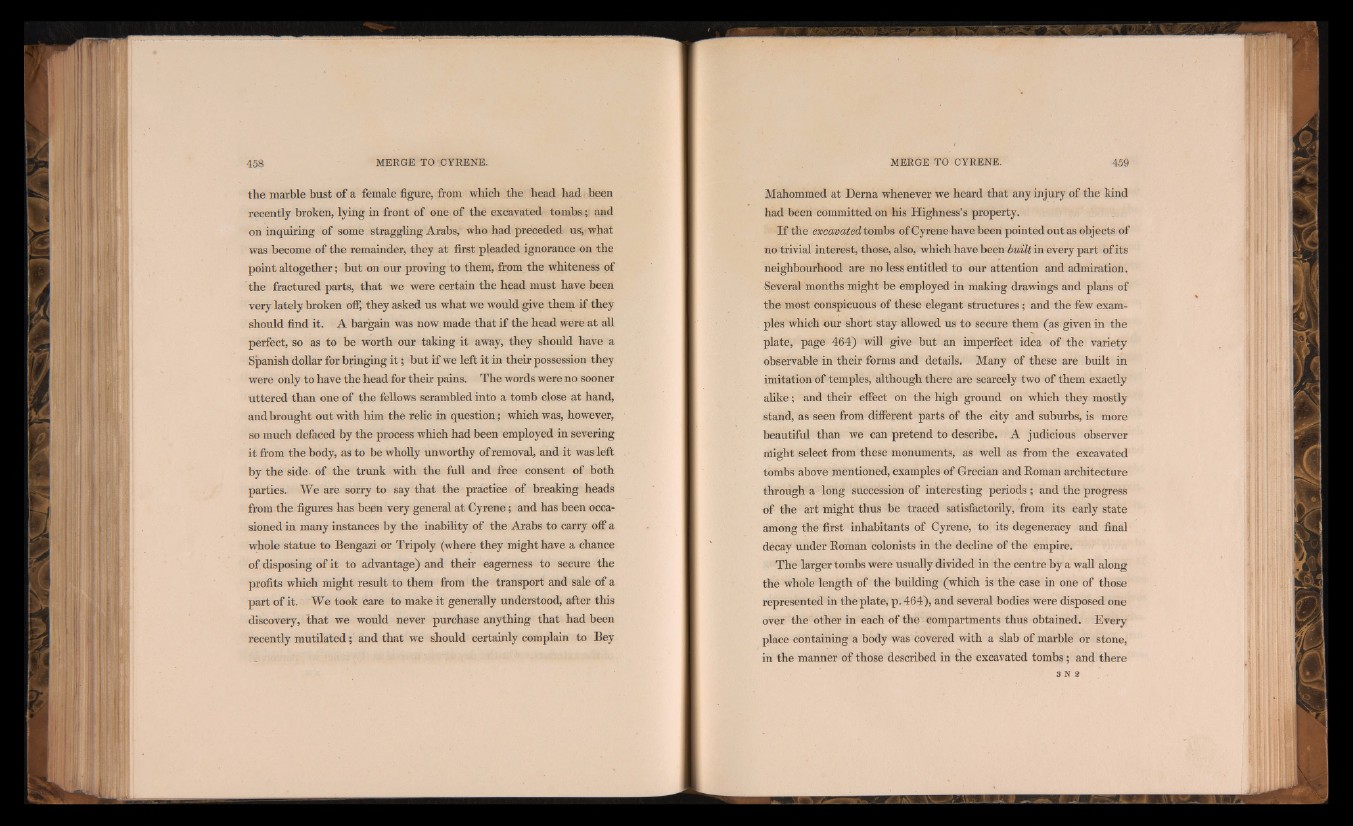
the marble bust of a female figure, from which the head had been
recently broken, lying in front of one of the excavated tombs; and
on inquiring of some straggling Arabs, who had preceded us, what
was become of the remainder, they at first pleaded ignorance on the
point altogether; but on our proving to them, from the whiteness of
the fractured parts, that we were certain the head must have been
very lately broken off, they asked us what we would give them if they
should find it. A bargain was now made that if the head were at all
perfect, so as to be worth our taking it away, they should have a
Spanish dollar for bringing i t ; but if we left it in their possession they
were only to have the head for their pains. The words were no sooner
uttered than one of the fellows scrambled into a tomb close at hand,
and brought out with him the relic in question; which was, however,
so much defaced by the process which had been employed in severing
it from the body, as to be wholly unworthy of removal, and it was left
by the side, of the trunk with the full and free consent of both
parties. We are sorry to say that the practice of breaking heads
from the figures has been very general at Cyrene; and has been occasioned
in many instances by the inability of the Arabs to carry off a
whole statue to llengazi or Tripoly (where they might have a chance
of disposing of it to advantage) and their eagerness to secure the
profits which might result to them from the transport and sale of a
part of it. We took care to make it generally understood, after this
discovery, that we would never purchase anything that had been
recently mutilated; and that we should certainly complain to Bey
Mahommed at Dema whenever we heard that any injury of the kind
had been committed on his Highness’s property.
I f the excavated tombs of Cyrene have been pointed out as objects of
no trivial interest, those, also, which have been built in every part of its
neighbourhood are no less entitled to our attention and admiration.
Several months might be employed in making drawings and plans of
the most conspicuous of these elegant structures ; and thé few examples
which our short stay allowed us to secure them (as given in the
plate, page 464) will give but an imperfect idea of the variety
observable in their forms and details. Many of these are built in
imitation of temples, although there are scarcely two of them exactly
alike ; and their effect on the high ground on which they mostly
stand, as seen from different parts of the city and suburbs, is more
beautiful than we can pretend to describe. A judicious observer
might select from these monuments, as well as from the excavated
tombs above mentioned, examples of Grecian and Koman architecture
through a long succession of interesting periods ; and the progress
of the art might thus be traced satisfactorily, from its early state
among the first inhabitants of Cyrene, to its degeneracy and final
decay under Koman colonists in the decline of the empire.
The larger tombs were usually divided in the centre by a wall along
the whole length of the building (which is the case in one of those
represented in the plate, p. 464), and several bodies were disposed one
over the other in each of the Compartments thus obtained. Every
place containing a body was covered with a slab of marble or stone,
in the manner of those described in the excavated tombs ; and there